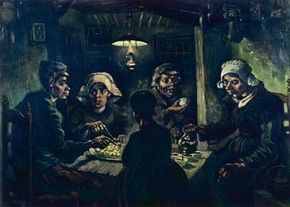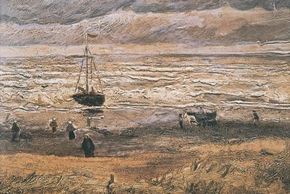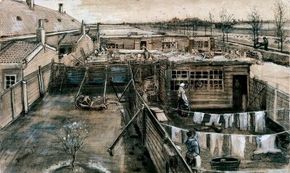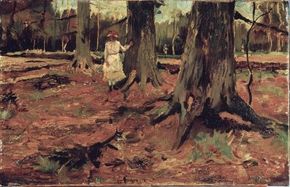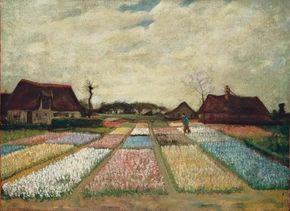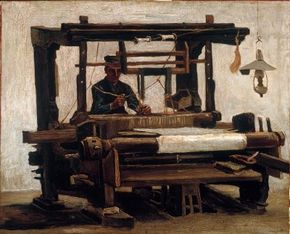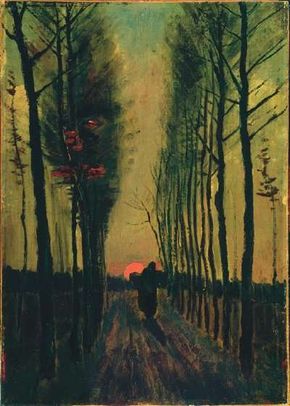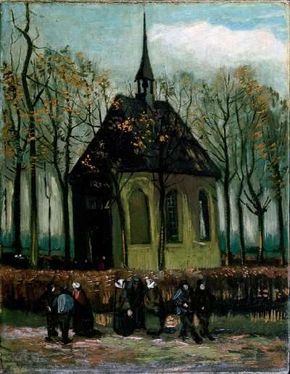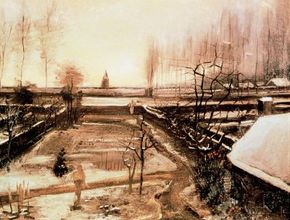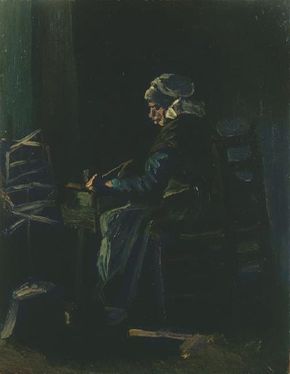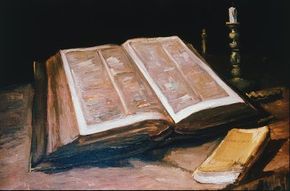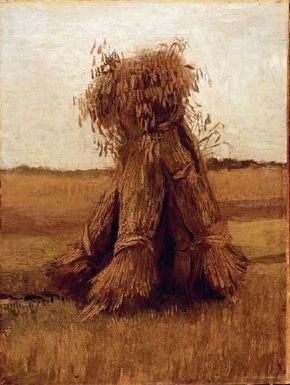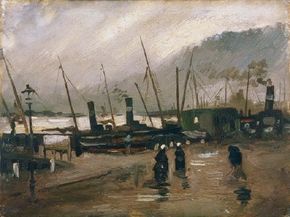The early paintings of Vincent van Gogh reflected the painter's innate command of color, intense effort and self-discipline, and desire to depict nature and working-class subjects.
At the age of 27, Vincent wrote to his brother Theo of his burning desire to change the course of his life. He had spent his youth in the pursuit of a rewarding vocation, but every one of his attempts met with failure. Recalling the enthusiasm for paintings that he had enjoyed during his years as an art dealer, he confessed, "I am often homesick for that land of pictures."
Advertisement
van Gogh Image Gallery
But rather than return to the profession that would once again surround him with works of art, he now planned to rely upon his own initiative and become a painter.
Vincent van Gogh spent the following years studying disciplined drawing in The Hague and practicing plein air painting -- painting outside -- to capture the fleeting effects of natural light and atmosphere. Later, van Gogh studied the working poor as subjects while living with his parents in Neunen, the Netherlands.
The early paintings of Vincent van Gogh represent an artist discovering his passion. The following pages take you to these paintings.
- View of the Sea at Scheveningen: Vincent van Gogh created this painting while visiting the fishing village of Scheveningen. Learn about View of the Sea at Scheveningen, which Vincent van Gogh painted while at The Hague.
- Carpenter's Yard and Laundry: This rendering of the view outside Vincent van Gogh's studio window displays the artist's innate skill. Observe the meticulous detail of Carpenter's Yard and Laundry.
- Young Girl in a Wood: As Vincent van Gogh grew more confident with color, he created this painting. Learn how Vincent van Gogh developed his skill for color with Young Girl in a Wood.
- Flower Beds in Holland: This luminous painting shows Vincent van Gogh's early understanding of landscape. Learn about Flower Beds in Holland, which Vincent van Gogh painted during his second year in The Hague.
- Peat Field: Focusing on the subject of agricultural labor, Vincent van Gogh created this bold painting while living in the province of Drenthe. Observe the solid, monumental figures of Peat Field.
- The Loom: While living with his family in Nuenen, Vincent van Gogh sought his subjects among the working poor, like the weaver in this painting. Learn about The Loom.
- Lane of Poplars at Sunset: This striking early painting by Vincent van Gogh reflects his continued explorations of landscapes. Observe how Vincent van Gogh depicted the change of seasons in Lane of Poplars at Sunset.
- Congregation Leaving the Reformed Church in Nuenen: Varied brush strokes add expressive force to the subjects in this early Vincent van Gogh painting. Learn about Congregation Leaving the Reformed Church in Nuenen.
- The Parsonage Garden in the Snow: This painting juxtaposes a stark winter garden with a golden sky. Observe the panoramic scope of Vincent van Gogh's The Parsonage Garden in the Snow.
- The Potato Eaters: This painting depicts a peasant family gathered for a modest dinner. Learn how The Potato Eaters reflects the sincerity Vincent van Gogh aimed to capture in his paintings.
- Woman Winding Yarn: Vincent van Gogh studied figures absorbed in mundane work while living in Neunen. Learn about Woman Winding Yarn, an example of Vincent van Gogh's explorations of the working poor.
- Still Life with Bible: This painting represents one of Vincent van Gogh's many early studies in still life. Learn how Still Life with Bible reflects Vincent van Gogh's intense artistic discipline.
- Sheaves of Wheat: Vincent van Gogh finished this painting during his last summer in Nuenen. Observe how Vincent van Gogh captures natural light in Sheaves of Wheat.
- The De Ruijterkade in Amsterdam: After moving to Antwerp, Vincent van Gogh sought his subjects in the city's dock, its ships, and its workers. View the artist's depiction of these subjects in The De Ruijterkade in Amsterdam.
- Skull of a Skeleton with Burning Cigarette: Vincent van Gogh completed this painting -- a complex study of the human form -- while a student at the Académie Royale des Beaux-Arts in Antwerp.
- Self-Portrait with Dark Felt Hat: One of Vincent van Gogh's early self-portraits, this painting depicts an artist in transition. Learn about Self-Portrait with Dark Felt Hat, which Vincent van Gogh created shortly after arriving in Paris.
When creating his early works, Vincent van Gogh often painted outside, insisting on capturing nature in its own element. Take a look at View of the Sea at Scheveningen, the painting in the next page, for an example.
To learn more about art, famous artists, and art history, check out:
Advertisement
